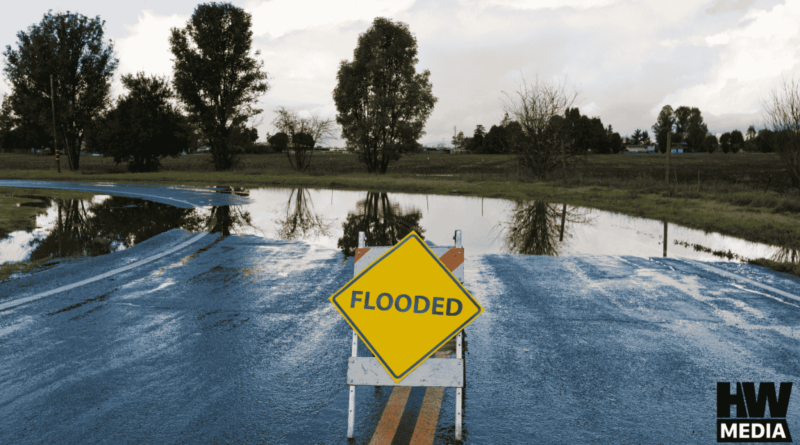Helping condo boards stay afloat during the storms of September
In 2024, the United States has already battled a year of extremes from tornadoes, hurricanes and flash flooding. Watery catastrophes have become far more and condo flooding is on the rise. September tends to be the most active month of the hurricane season. Of storms recorded in the Atlantic over time, over one-third have formed during September.
The immense flooding that occurs during storm season can lead to evacuations and widespread power outages as we continue to feel the increasing severity of weather disasters. The potential for water-related disasters is real.
But it doesn’t only take big storms to cause major problems for a residential community. In fact, smaller scale events such as fires, burst pipes, or power outages can be extremely challenging for several reasons.
Perhaps most important is the leadership structure in residential communities. Communities and associations typically don’t have the same type of central, onsite management as office buildings, nor are they guided by the same regulations. This can create much confusion when developing and maintaining an emergency response plan.
So, how can these situations be handled in condo buildings or managed communities? There are four basic steps that those responsible for a property need to take to help manage disasters effectively to get residents back into their apartments as soon as possible.
1. Establish leadership
Every good military and police operation has a strong central command because it helps control the flow of information and the allocation of resources. Good disaster response is no different.
Defining jurisdiction will help prevent paralysis following a flood and improve the chances of effective management of the recovery process. When a condo building’s parking garage is flooded, who manages the disaster? Is it a property manager? The condo board? Or is there a separate committee that deals with these situations?
Before a condo is hit with an unexpected event, establish who is responsible for managing what. Then clearly communicate this to residents to streamline the response process. Also, make residents aware of where the building’s responsibility ends, and the unit owner’s responsibility begins.
2. Develop and test plans
Office buildings are mandated to develop emergency preparedness plans and conduct evacuation drills. But that’s not always the case for residential buildings. Condo buildings are required to test and maintain a working emergency alarm and fire escape plan, rarely more.
Developing and testing an emergency preparedness plan is undoubtedly in the best interest of both the property manager and residents. With this prepared and tested, when a disaster hits, condo buildings should immediately put that plan into action. This includes issuing clear evacuation orders to residents and enabling the flow of people out of the building in a safe, controlled manner. It also includes clear guidelines and 24/7 contact information for service providers such as plumbers, restoration firms and electricians.
3. Communicate next steps
The first thing to break down during an emergency is communication. Having clear and strong leadership helps, but much more can still be done.
Residents should know what will happen after an evacuation order is issued and whom to contact about next steps. The condo board, the property manager, or the decision maker, needs to distribute news via their website, email, social media, and some other agreed-upon communication, such as SMS so that residents are aware of the situation in their building. Also, pre-determine alternate meeting places so residents know how to contact management.
4. Mobilize resources
After a disaster hits a residential building or community, specialized resources should be quickly mobilized to properly mitigate damage and start a safe and healthy path to recovery. Depending on the size of the flood, these resources could include restoration specialists, plumbers, electricians, and specialized equipment for dehumidification and temporary power generation.
Management should have a professional restoration provider on speed dial who will arrive immediately, assess the situation, and enact an emergency mitigation plan. The sooner this process begins, the sooner residents can begin returning home. The best scenario is to have a partnership with a disaster restoration company already in place.
Failure to bring in specialists could result in individuals taking incorrect actions, possibly endangering residents as well as lengthening the recovery timeline. Often, these professional service providers will be able to map out and track the progress of the recovery, therefore speeding up the insurance claim process.
When it comes to disaster management in residential buildings and communities, the mandated minimum is far from good enough. By establishing leadership, developing, and testing plans, communicating the next steps, and mobilizing resources, Managers and Communities will be far better equipped to respond to disaster and restore their properties.
As the old saying goes, an ounce of prevention is worth a pound of cure. In the case of water damage, several hundred dollars in preparation can save tens of thousands in restoration and repairs.
Jim Mandeville is SVP, Large Loss at First Onsite Property Restoration.
This column does not necessarily reflect the opinion of HousingWire’s editorial department and its owners.
To contact the editor responsible for this piece: [email protected]

